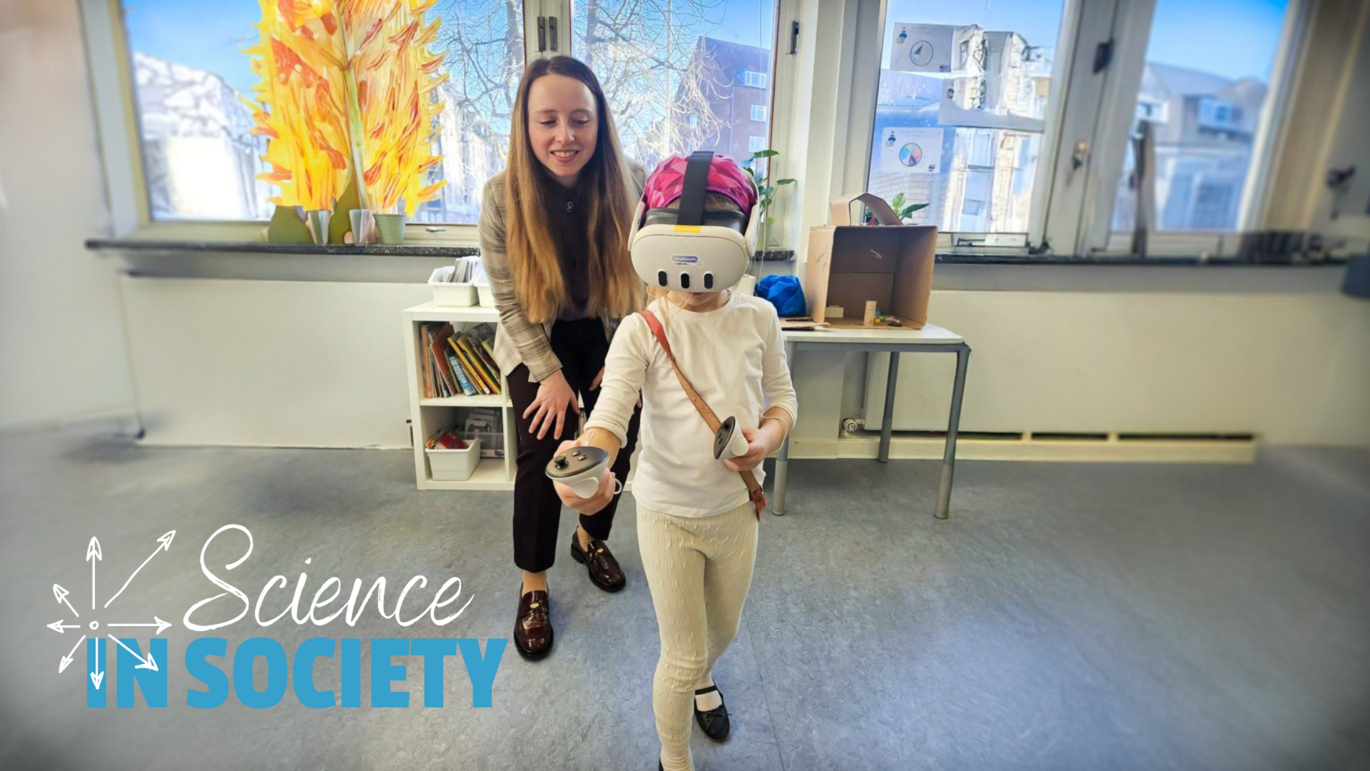Science through a child’s eyes: the dentist moves into the classroom
A school student puts on VR goggles and takes a trip to the dentist. It might sound like a scene from a science fiction movie, but for PhD student Ruza Bjelovucic from the Department of Dentistry and Oral Health, it's a reality. She recently took dental science out of the university and straight into the classroom.

Science in society
The University Act requires that researchers, alongside their research and teaching, engage in disseminating their work through so-called knowledge exchange or research-based communication.
“Science in society” is a series of articles about Health researchers who apply their expertise in society in ways that go beyond traditional research communication and expert commentary.
“It all started when Professor Kasia Gurzawska-Comis was invited to give a talk at her daughter’s school,” says Ruza Bjelovucic.
“She asked if I had something we could show the children—something that combined science and play. I immediately thought of using VR as a learning platform and discussed the idea with my PhD supervisor, Associate Professor Ruben Pauwels, who was also on board.”
Originally from Croatia and trained as a dentist, Ruza Bjelovucic moved to Denmark four years ago, where her career took a new turn. After two years in a private practice, she felt an increasing pull toward research.
“My curiosity and love of science became impossible to ignore. I realized that my true passion lies in finding ways technology can enhance both education and patient care,” she says.
Today, Ruza Bjelovucic is pursuing a PhD that combines technology and dental education in new and groundbreaking ways.
Virtual reality as a research tool
At the core of her research is the use of virtual reality (VR) and mixed reality (MR) in training dental students - especially in surgical education.
“VR creates fully immersive 3D environments, while MR blends the virtual with the real. It’s about complementing traditional teaching methods and engaging the new generation of students in a way that matches their reality,” explains Ruza Bjelovucic.
In her PhD project, she uses VR and MR to train dental students in everything from instrument familiarity to maintaining sterility - even lifesaving first aid. But the visit to the classroom was the first time the technology had been used with such a young audience.
The goal was to introduce children to oral hygiene and the clinical environment in an engaging and educational way.
“They picked it up immediately,” says Ruza Bjelovucic enthusiastically.
“It was impressive to see how intuitively the children moved within the virtual environment. Their small hands handled the controllers as if they'd done it all their lives, with no hesitation or nervousness at all.”
A day of toothbrushes and technology
The day at the school was divided into two workshops. First, Professor Kasia Gurzawska-Comis gave a presentation on dental care, adapted to the children’s age. Then the students designed and drew their own toothbrushes - a creative activity followed by the highlight: the VR goggles.
“We ensured everything took place in a safe and controlled environment, as VR is generally not recommended for children under 12. But with short, guided five-minute sessions, they got a taste of what a dental clinic looks like.”
The VR scenario was a specially developed visual experience of a dental clinic, where children could interact with instruments, move around, and get a feel for what it’s like to be in a clinical setting.
“Technology can help make the dental world more familiar and less intimidating. It’s not about traditional teaching but about sparking curiosity and demystifying an environment that can seem strange - or even frightening - for some children,” Ruza Bjelovucic explains. She continues:
“VR could become a valuable tool in addressing dental anxiety and helping people feel more prepared, safe, and in control even before they step into a clinic. And now that the technology is becoming more accessible, I believe the project has huge potential.”
Research at a child’s eye level
But why bring the dental clinic into the classroom at all? According to the PhD student, the project can also be seen as part of a broader public health initiative.
“Nearly 40% of the Danish population has at least one untreated cavity. Many of the young patients I met in the clinic could have avoided serious problems if they’d received better support and information earlier in life,” says Ruza Bjelovucic.
She also sees great potential in less demanding technologies like augmented reality (AR), which only requires a smartphone.
“Science doesn’t belong only in laboratories. It should make a difference in people’s everyday lives. Imagine a biology class where the teacher holds a phone over a child’s hand and shows how blood cells work—in real time. It’s a fantastic way to make the invisible visible, and my clear goal is to create more of these kinds of presentations and tools,” she says.
Contact
PhD student Ruza Bjelovucic
Aarhus University, Department of Dentistry and Oral Health
Email: rbje@dent.au.dk